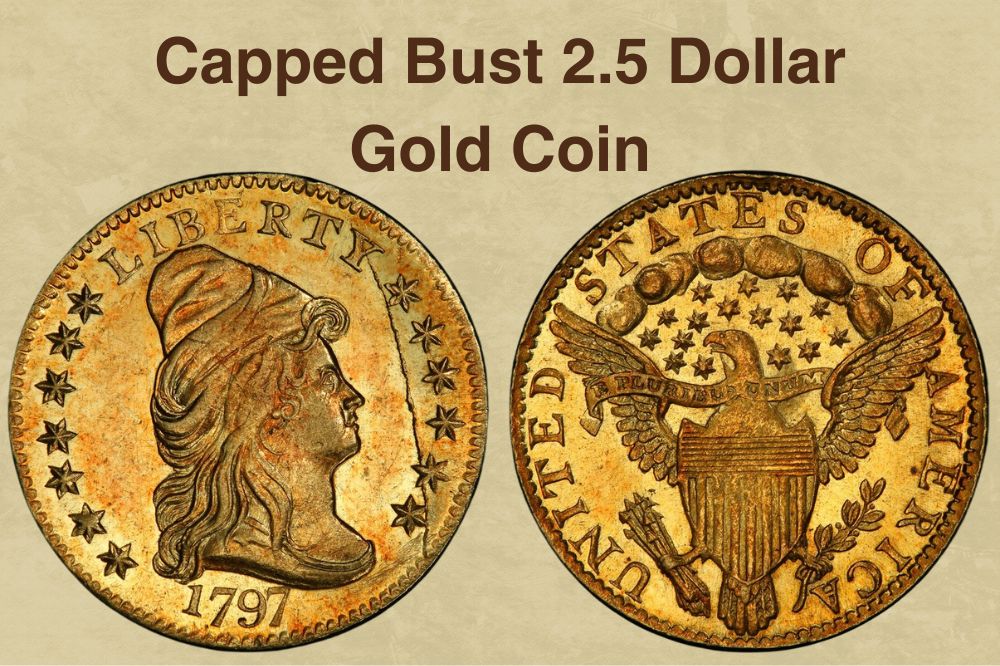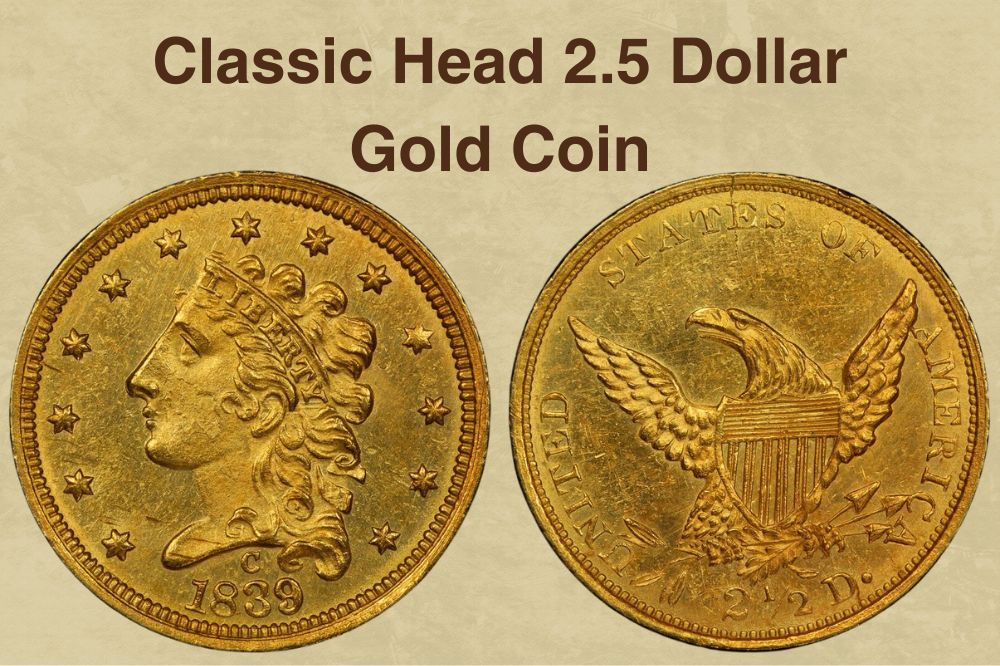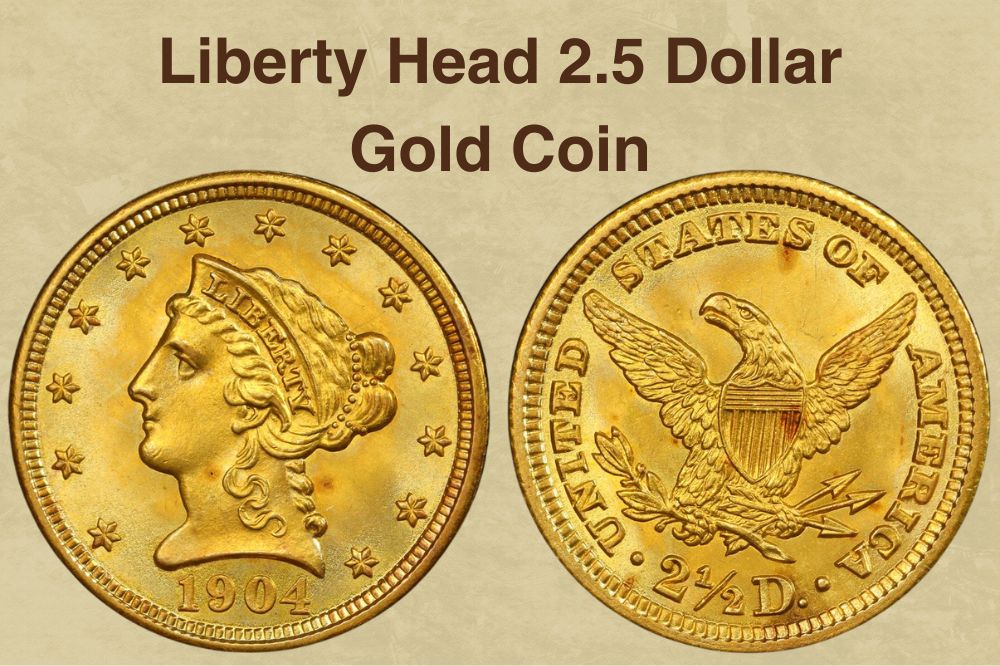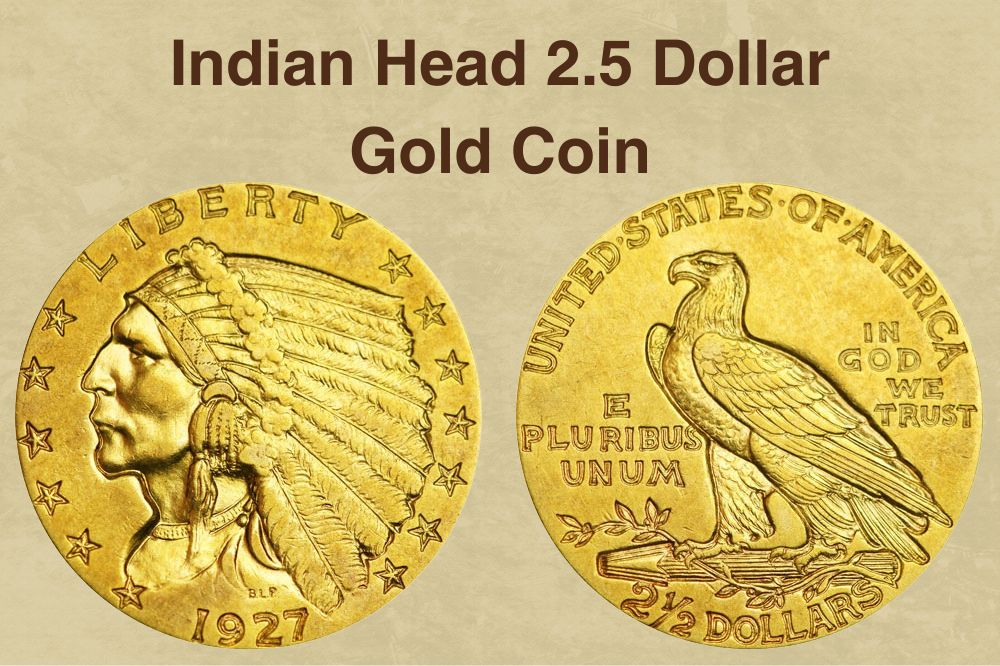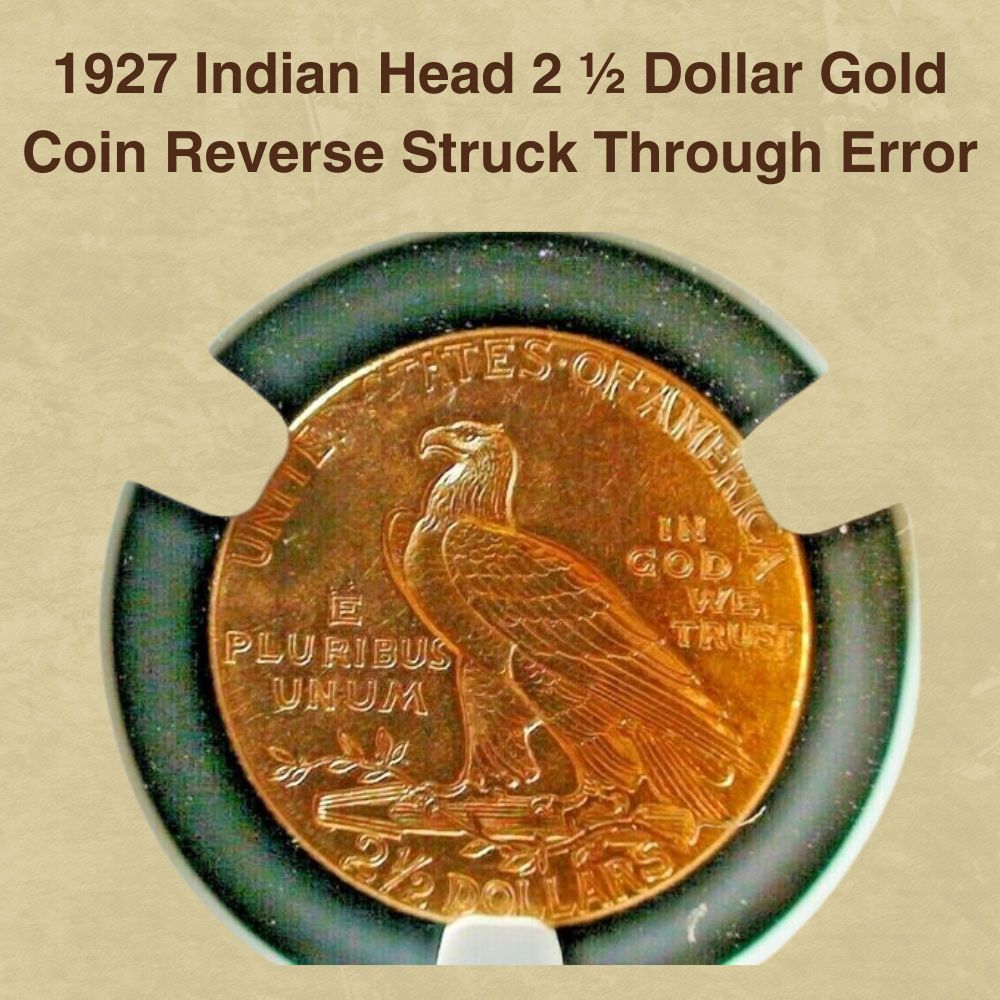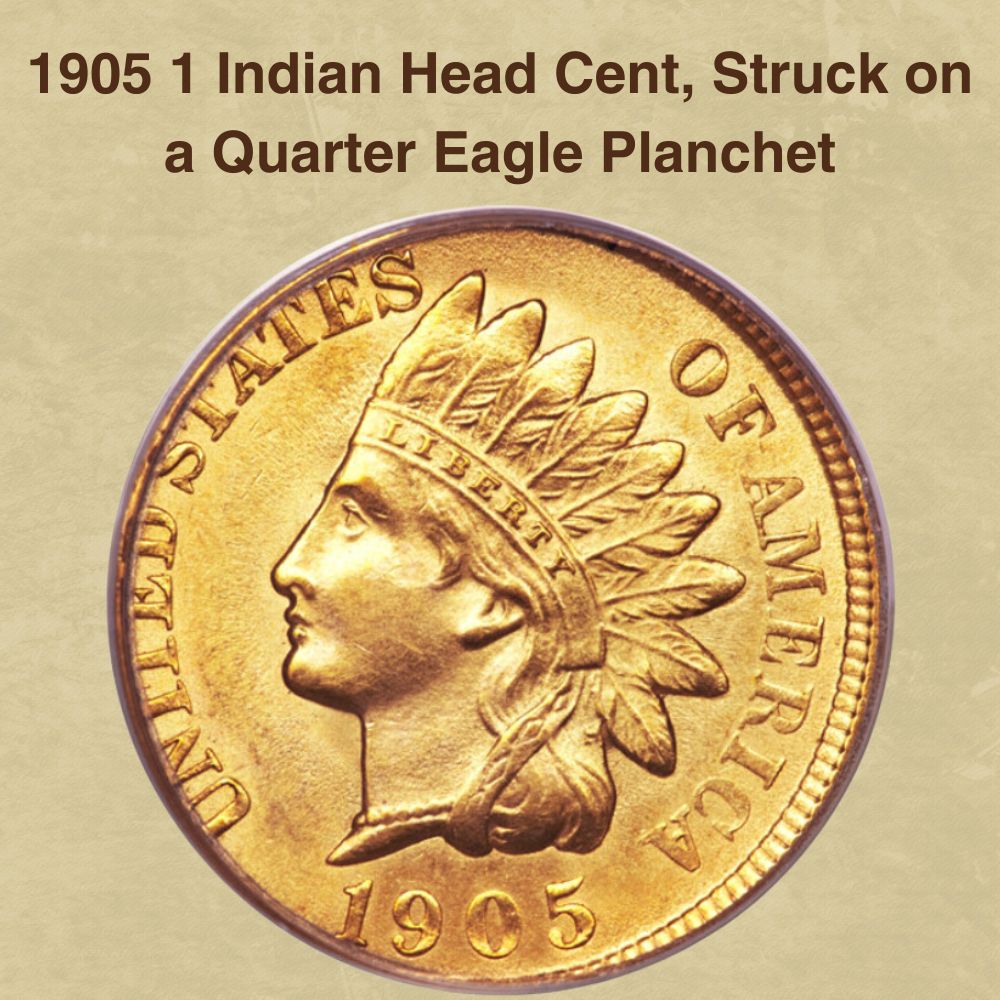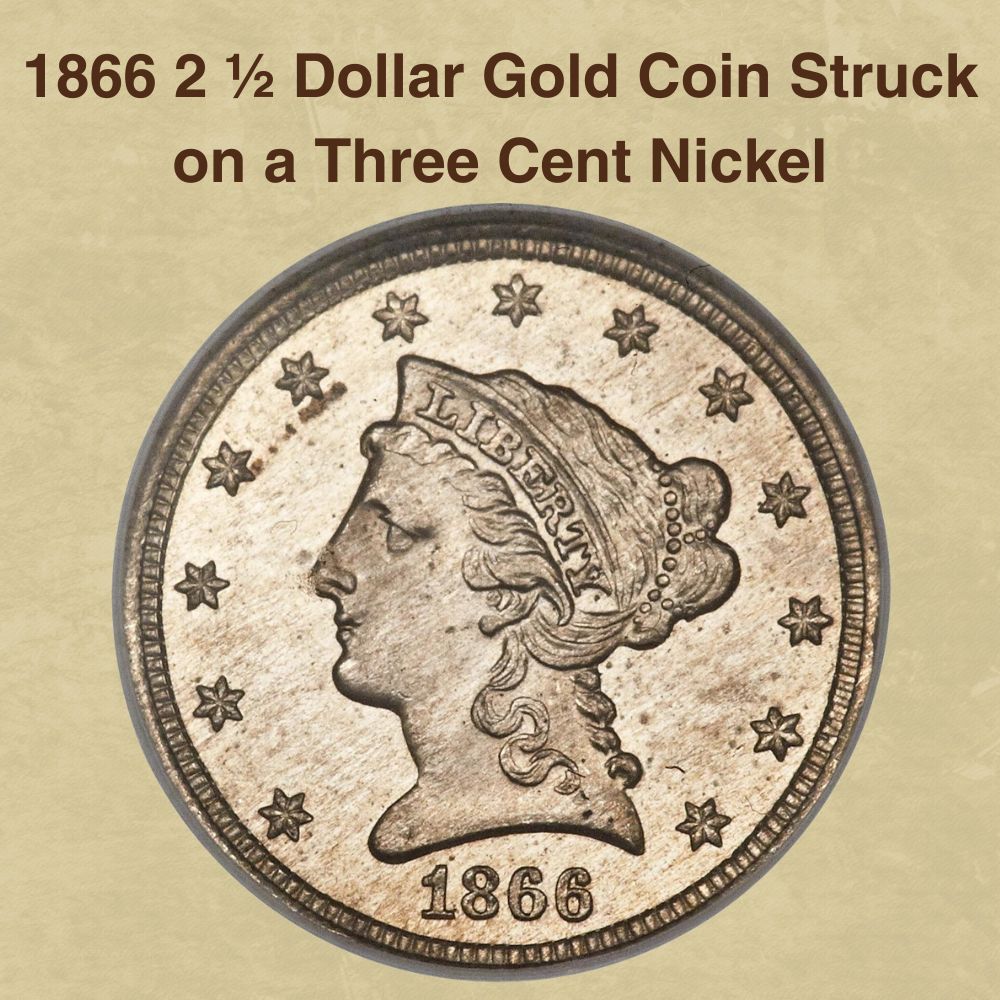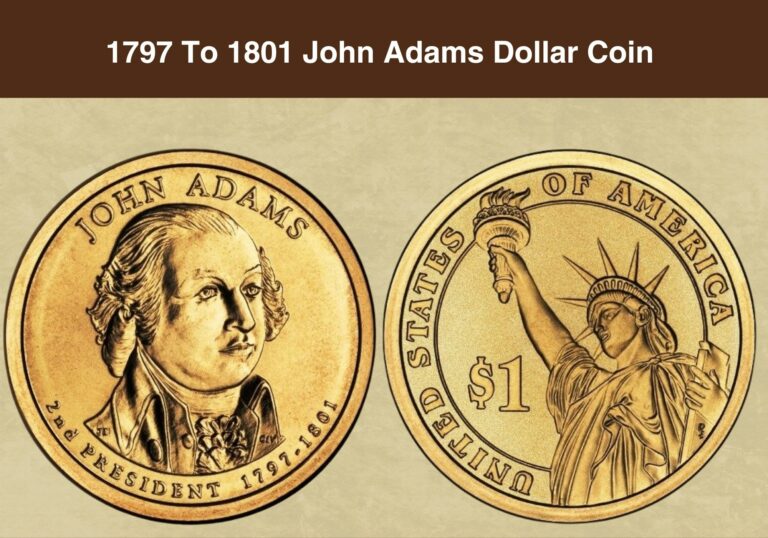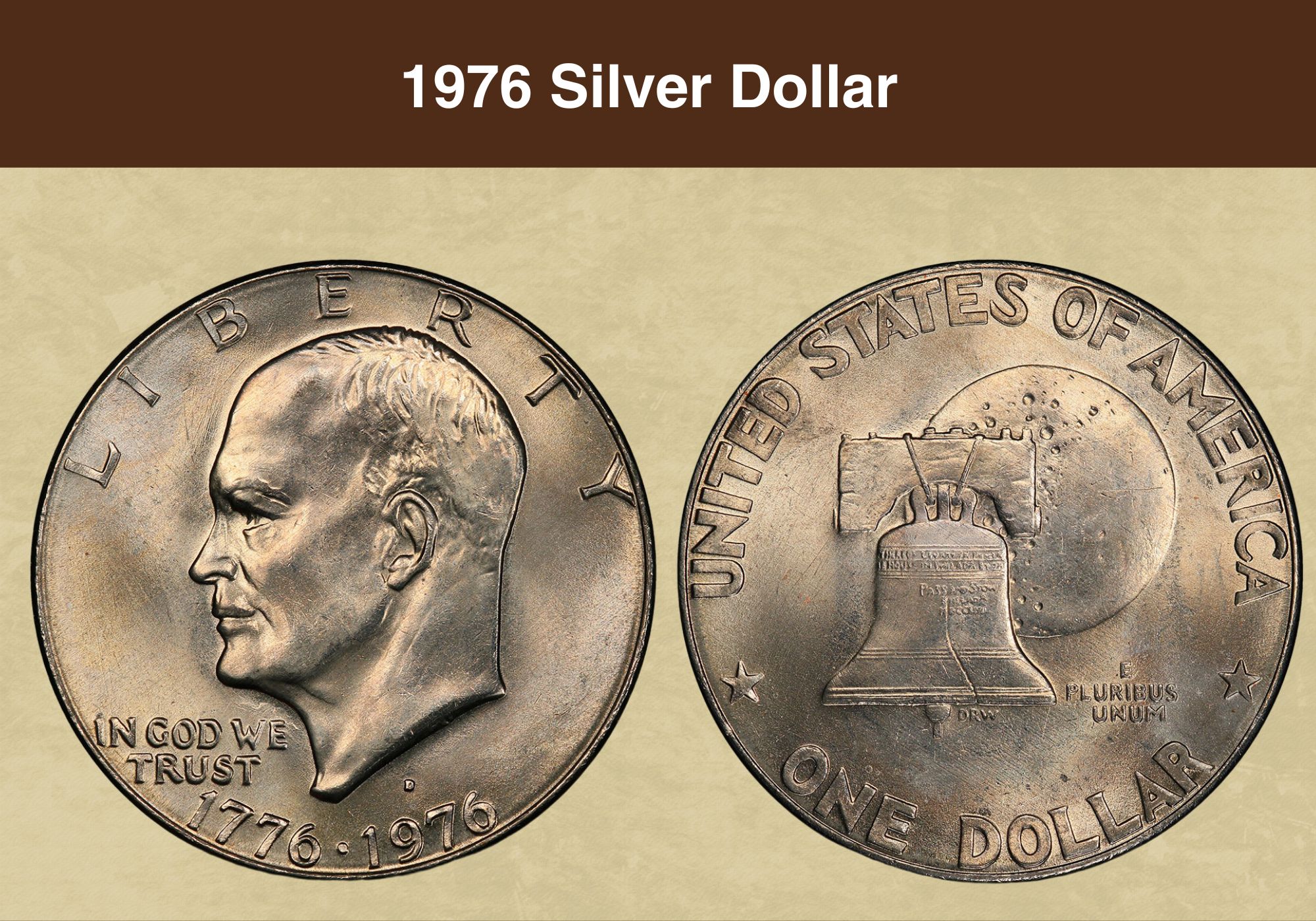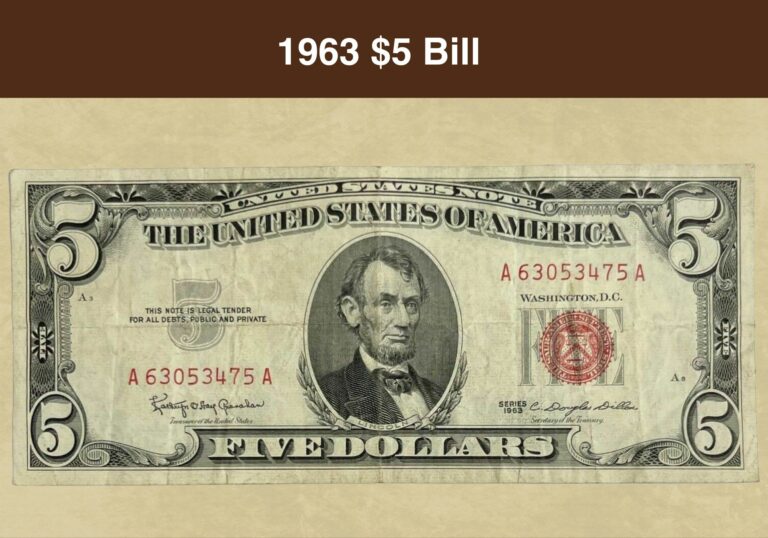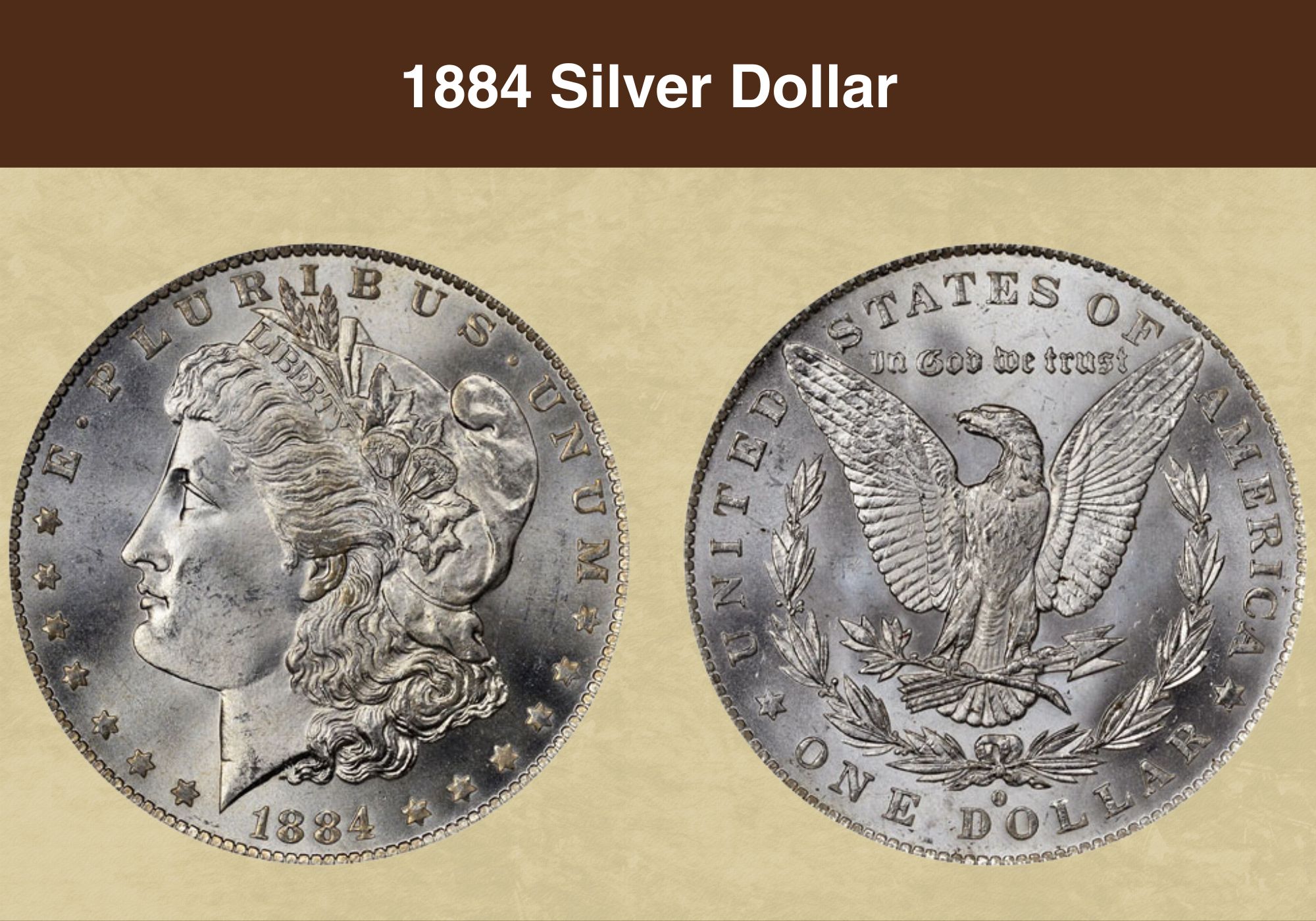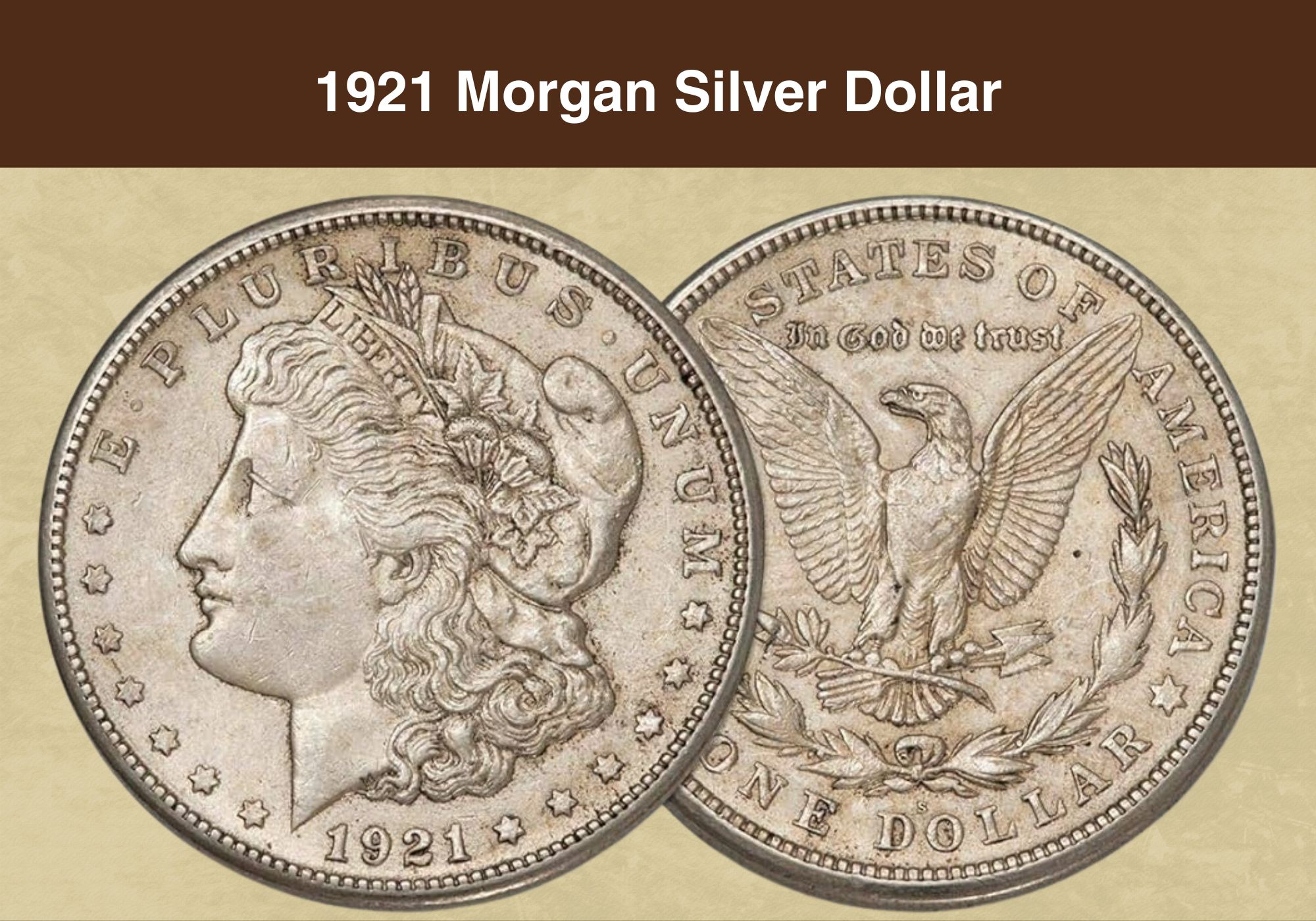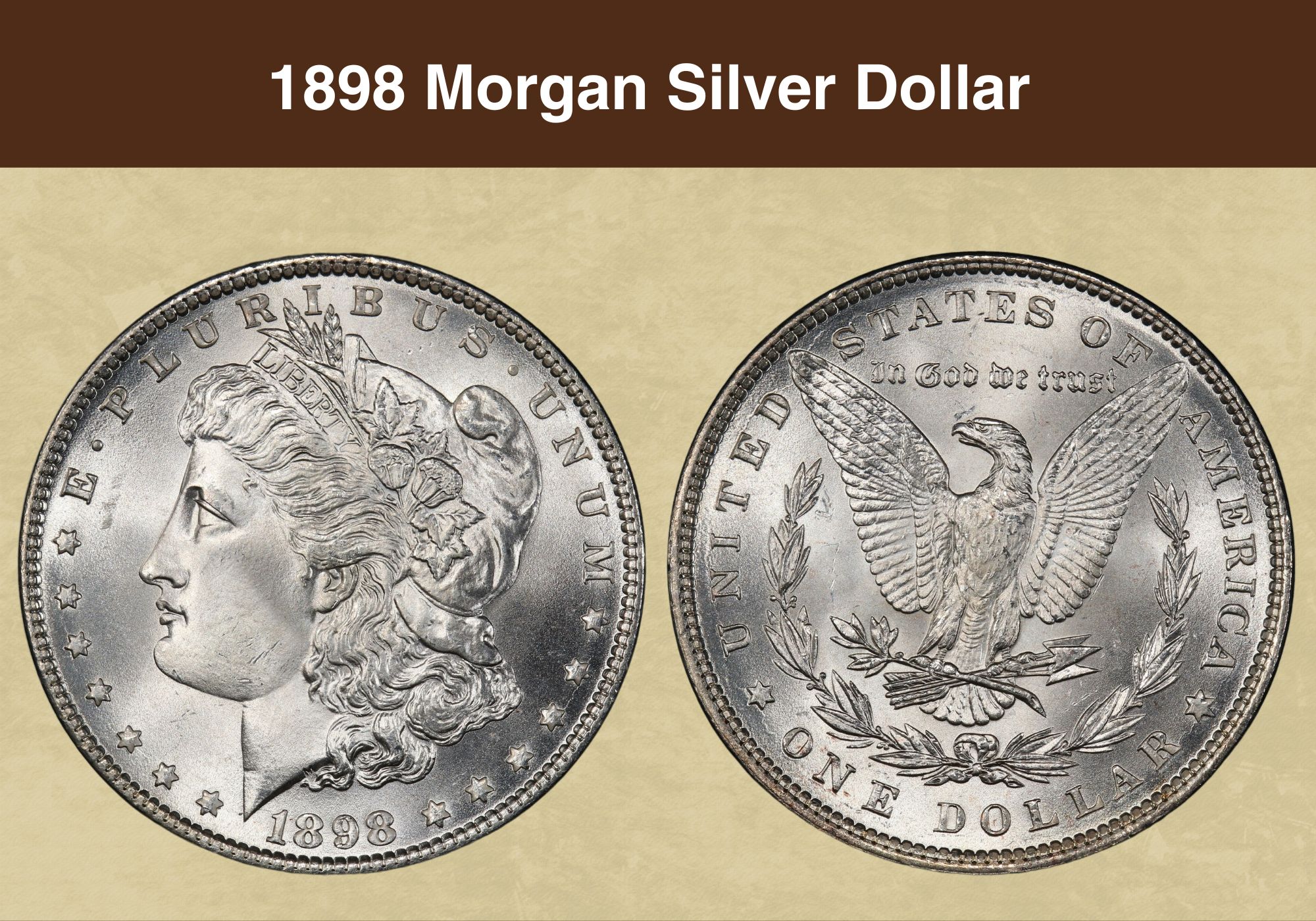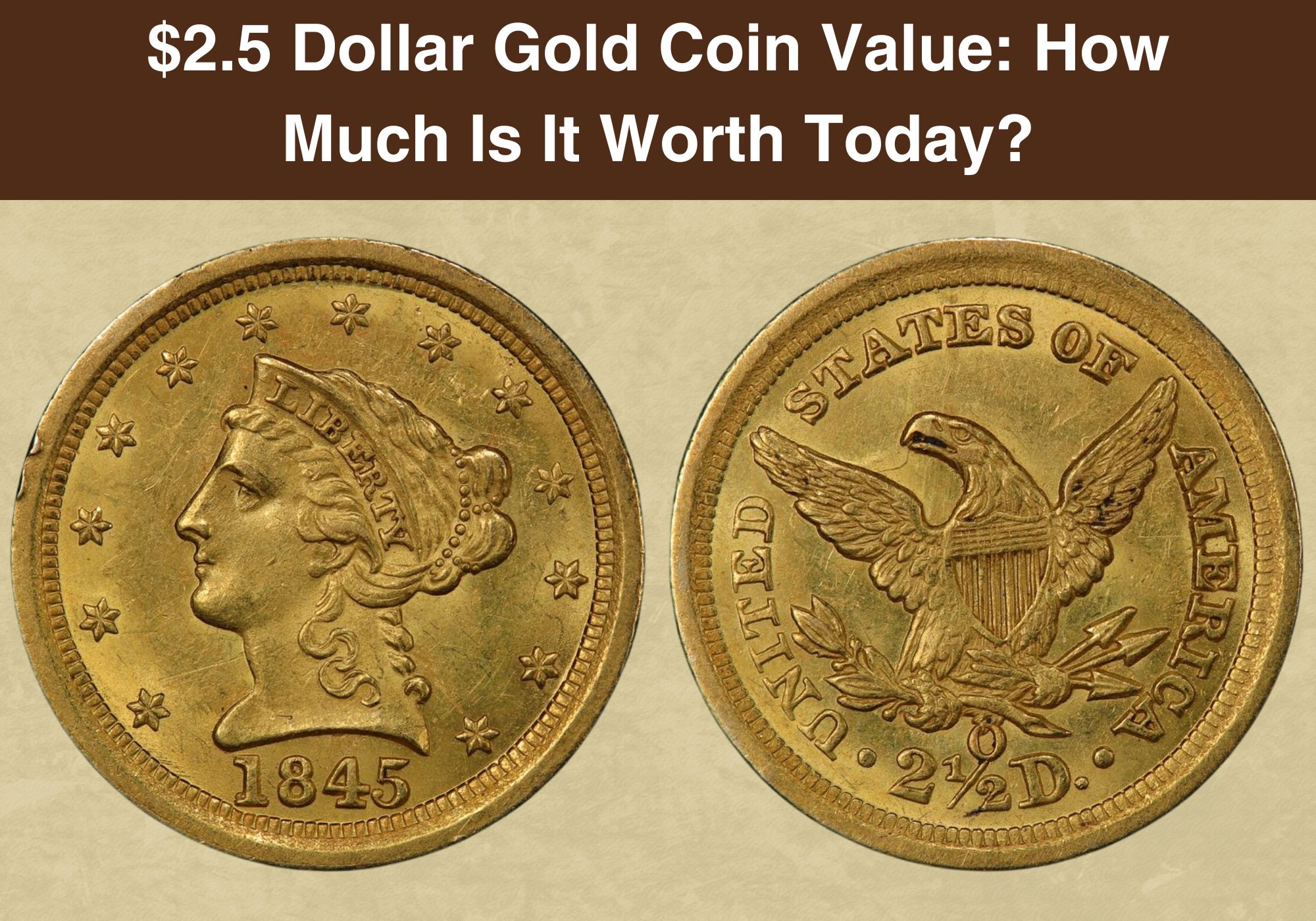
Coin Value Contents Table
- 2.5 Dollar Gold Coin Value Chart
- History of the 2.5 Dollar Gold Coin
- Features of the 2.5 Dollar Gold Coin
- Capped Bust 2.5 Dollar Gold Coin
- Classic Head 2.5 Dollar Gold Coin
- Liberty Head 2.5 Dollar Gold Coin
- Indian Head 2.5 Dollar Gold Coin
- 2.5 Dollar Gold Coin Value Guides
- Capped Bust 2.5 Dollar Gold Coin Value
- Classic Head 2.5 Dollar Gold Coin Value
- Liberty Head 2.5 Dollar Gold Coin Value
- Indian Head 2.5 Dollar Gold Coin Value
- 2.5 Dollar Gold Coin Grading
- 2.5 Dollar Gold Coin Errors
- Where To Sell Your 2.5 dollar gold coin?
- FAQS
Are you interested in adding 2 ½ dollar gold coins to your portfolio?
Are you curious how much these old yet popular gold coins are worth today and whether they are a good investment?
You’ve come to the right place! This guide will explain everything you need to know about the 2 ½ dollar gold coin value.
We’ll briefly review the coin’s history, explore its various features of the year, and then examine its actual value in depth.
So, let’s get started and find out: How much is the 2 ½ dollar gold coin worth?
2.5 Dollar Gold Coin Value Chart |
||||
| Quarter Eagle | Good | Fine | Extremely Fine | Uncirculated |
| Early $2.50 (1796-1834) | $6600 | $10300 | $1480 | $475000 |
| Classic Head $2.50 (1834-1839) | $800 | $1150 | $1450 | $95000 |
| Liberty Head $2.50 (1840-1907) | $1380 | $1405 | $1430 | $52500 |
| Indian Head $2.50 (1908-1929) | $435 | $525 | $625 | $8000 |
History of the 2.5 Dollar Gold Coin
The 2 ½ dollar gold coin is also known as the Quarter Eagle. Like other United States gold coins, it was produced at the Philadelphia Mint from 1796 to 1929.
In subsequent years, other mints, including Dahlonega, New Orleans, Charlotte and San Francisco, also minted the two-and-a-half-dollar gold coin.
It is worth noting that the various mints did not produce the Quarter Eagle gold coin in some years. In particular, production was paused from 1809 to 1820 and then again from 1916 to 1924.
The 2 ½ dollar gold coin was discontinued in 1933 when the United States ceased applying the Gold Standard. However, the last coins were officially issued in 1929, marking the end of this coin series.
Features of the 2.5 Dollar Gold Coin
In this section, we will explore the features of the 2 ½ dollar gold coin. There are several varieties of this coin, which can be attributed to the various design changes that occurred over the coin’s lifetime.
Familiarizing yourself with the features and physical attributes can help you identify Quarter Eagle dollar gold coins worth money.
So, let’s dive in and learn more about the different varieties of Quarter Eagles and their features.
Capped Bust 2.5 Dollar Gold Coin
The Capped Bust variety of the Quarter Eagle is also known as the Turban Head. It was minted between 1796 and 1807, and its mintage was fewer than 20,000 coins.
There are three types of the 2 ½ dollar Capped Bust gold coin. They include the following:
1. Capped Bust Facing Right
- No stars on the obverse (1796)
- Stars on the obverse (1797-1807)
2. Capped Bust Left (1808)
3. Small Cap, Large Diameter (1821-1827)
4. Small Diameter (1829-1834)
Obverse of the Capped Bust 2 ½ Dollar Gold Coin
The obverse of the 1796 Quarter Eagle only featured the right-facing portrait of Lady Liberty wearing a large cap with the initials LIBERTY inscribed at the front. The year date is shown at the base.
Starting from 1797, thirteen stars were included on the obverse—seven on the left and six on the right. In 1808, John Reich redesigned the portrait to face left; the turban was also made smaller to resemble a traditional cap. This was a one-year-only production.
In 1821, the Mint resumed production of the two-and-a-half-dollar gold coins. The coins’ diameter was slightly reduced from 20mm to 18.5mm, giving this variety the name Small Cap, Large Diameter.
The Quarter Eagle was further scaled down to 18.2mm in diameter, subsequently reducing the size of the inscriptions and stars. This last version was produced until 1834, when production ceased.
Reverse of the 2 ½ Dollar Gold Coin
On the reverse of the two-and-a-half gold dollar coin, a heraldic eagle with its wings spread out is displayed. The union shield is placed in front of the bird’s chest.
The bird clutches arrows in one of its talons and an olive branch, representing peace in the other talon. The arrows symbolize liberty, while the shield represents unity and independence.
The inscriptions UNITED STATES OF AMERICA encircle the coin’s diameter while the denomination 2 ½ DOLLARS is shown at the bottom. You will also notice a flag above the eagle’s head with the inscription E PLURIBUS UNUM.
Classic Head 2.5 Dollar Gold Coin
The U.S. Mint changed the Quarter Eagle design again, introducing the Classic Head from 1834 to 1839.
Obverse of the Classic Head 2 ½ Dollar Gold Coin
William Kneass designed the new Classic Head, which shows a left-facing portrait of Liberty. Her flowing hair is tied with a ribbon with the inscription LIBERTY.
Thirteen stars encircle the coin’s diameter, and the date is shown at the base.
Reverse of the Classic Head 2 ½ Dollar Gold Coin
The reverse shows the heraldic eagle with wings spread out. The Union Shield is positioned on the eagle’s chest. The bird also holds arrows in one talon and an olive branch in the other.
The inscription UNITED STATES OF AMERICA encircles the coin’s diameter, while the denomination 2 1/2D is shown at the bottom.
Conspicuously missing is the motto E PLURIBUS UNUM.
Liberty Head 2.5 Dollar Gold Coin
The next design, known as the Liberty Head or Coronet Head, was designed by Christian Gobrecht. The mint struck this coin continuously from 1840 to 1907, making it the longest-running and most popular variety in the entire series.
The Obverse Of The Liberty 2 ½ Dollar Gold Coin
The obverse features the left-facing portrait of Lady Liberty with a coronet showing the inscription LIBERTY.
There are thirteen stars around the coin’s diameter, and the date appears at the bottom.
The Reverse of the Liberty 2 ½ Dollar Gold Coin
The reverse is similar to the previous varieties, which show the heraldic eagle with the arrows and olive branch clutched in its talons.
The motto E PLURIBUS UNUM is also missing from the Liberty Quarter Eagles.
One variety that stands out is the 1848 date, struck in California. The initials CAL are inscribed on the reverse above the eagle. The facility struck 1,389 of these coins, which are extremely popular among collectors.
Indian Head 2.5 Dollar Gold Coin
The Indian Head Quarter Eagle was the last in the series, produced from 1908 to 1929. Created by Bela Lyon Pratt, the new design was a significant shift from the previous ones, purposefully featuring a sunken design.
But this new design was largely unpopular, and the Indian Head Quarter Eagle gold coin lurked in the background as few collectors paid attention to it. Of course, the story is different today as this has become one of the most popular coins in the entire series.
The Obverse of the Indian Head 2 ½ Dollar Gold Coin
On the obverse side of the Indian Head Quarter Eagle is a left-facing portrait of a Native American adorned in traditional headgear.
The word LIBERTY appears at the top along the coin’s inner rim, while the date is shown directly opposite at the bottom.
There are six stars along the left and seven along the right rim.
The Reverse of the Indian Head 2 ½ Dollar Gold Coin
When you turn over the coin, the reverse shows an eagle perched on a branch and clasping an olive branch.
The inscription UNITED STATES OF AMERICA appears along the upper rim. On the left and right sides, respectively, are the mottos E PLURIBUS UNUM and IN GOD WE TRUST.
The denomination 2 ½ DOLLARS appears at the bottom.
2.5 Dollar Gold Coin Value Guides
In this section, we will find out how much a 2 ½ dollar gold coin is worth. Like other gold dollar coin series, the 2 ½ or Quarter Eagle series is vast and varied, with numerous dates and mint marks.
Let’s look at the coin values under the various categories.
Capped Bust 2.5 Dollar Gold Coin Value
There is no one-size-fits-all answer on how much a 2 ½ dollar gold coin is worth. For example, a 1797 Capped Bust Quarter Eagle is worth about $20,0000 to $250,000 in circulated condition, while an uncirculated example graded MS64 can fetch as much as $875,000.
At the same time, an 1834 2 ½ dollar gold coin graded Extremely Fine can sell for as much as $60,000 while one in mint state can fetch up to $235,000.
The 1808 is one of the rarest and most sought-after dates. Expect between $30,000 and $250,000 for circulated pieces and $3,250,000 for uncirculated, mint-state specimens.
Classic Head 2.5 Dollar Gold Coin Value
Classic Head Quarter Eagles were struck continuously from 1834 to 1839. Values will vary from date to date.
For example, an 1835 Quarter Eagle in circulated condition is worth between $500 and $4000, while an uncirculated example has an estimated value of $67500.
Meanwhile, a 2 ½ dollar gold coin dated 1839 can fetch between $1250 and $12000 in circulated condition and as much as $135000 in uncirculated condition.
The 1838 Quarter Eagle is a rare date to pay attention to due to its low mintage of less than 7000. This coin is valued at $3000 to $27500 in circulated condition and at least $100000 in uncirculated, pristine condition.
Liberty Head 2.5 Dollar Gold Coin Value
The Liberty Head is the most popular in the Quarter Eagle series.
Several notable rarities are worth a fortune. These include the 1841 Liberty Head, believed to have been made using a proof finish, and the 1863, 30 of which were also made of proof finish.
Other rarities include the 1854 set with an exceptionally low mintage of 246 coins and the 1875 low-minted set.
The most notable is the 1848 CAL 2 ½ dollar gold coin, worth between $27500 and $115000 in circulated condition and up to $475000 in uncirculated, mint state.
Indian Head 2.5 Dollar Gold Coin Value
Last but not least is the Indian Head, with the 1911-D being the rarest in this category due to its comparatively low mintage of 55,680.
This Quarter Eagle is worth between $600 and $5500 in circulated condition, while rare uncirculated specimens can sell for as much as $195,000.
2.5 Dollar Gold Coin Grading
When grading a 2 ½ dollar gold coin, you should consider factors such as luster, contact marks, smoothing, and errors.
Circulated Quarter Eagles are more common than their uncirculated counterparts. The majority of these coins are graded Fine or Extremely Fine, with a few About Uncirculated sets.
Circulated 2 ½ gold coins will tend to have smoothing, contact marks, and hairlines on the high points on the reverse and obverse.
On the other hand, the rare uncirculated specimens feature some luster, though the coins might not be as brilliant due to their age. Look for full details on the inscriptions and minimal, if any, signs of smoothing on all parts of the coin.
Here is a video we recommend for tips on how to grade your Quarter Eagle Gold Dollar coins.
2.5 Dollar Gold Coin Errors
Quarter Eagle errors are rare, so the few existing and notable errors are very popular and sought-after. A lot of care and precision were applied when striking these early gold coins, which explains why errors are so rare.
Here are some examples of 2 ½ 2-dollar gold coin errors worth money.
1927 Indian Head 2 ½ Dollar Gold Coin Reverse Struck Through Error
The Indian Head Quarter Eagle is known for its struck-through errors across several dates, with the prominent ones being 1911, 1916, and 1927.
Struck-through errors occur when impressions of the obverse design appear on the reverse. So, when you examine the coin’s reverse side, you might notice traces of the Native American headgear.
One such specimen graded MS62 by the Numismatic Guaranty Company (NGC) attracted a selling price of $2,999. The Quarter Eagle, with its struck-through error, is in pristine condition, further attracting collector interest.
1905 1 Indian Head Cent, Struck on a Quarter Eagle Planchet
In 1905, Mint workers struck a Quarter Eagle gold planchet with the design of a 1 Indian Head cent. If this was accidental, the mint workers probably intended to strike the planchet with an Indian Head 2 ½ gold dollar die but ended up using the 1 Indian cent die.
Some numismatics have contended that this error was likely not accidental. Mint workers intentionally fitted Quarter Eagle gold planchets into a minting press fitted with Indian Head one-cent dies to produce a few pieces for collectors.
Collectors will pay as much as $850 for such an interesting error coin.
1866 2 ½ Dollar Gold Coin Struck on a Three Cent Nickel
This is another example of interchanged planchets in the Quarter Eagle series. In this case, an error coin was produced when mint workers fed a three-cent nickel planchet into a coinage press set up to strike Quarter Eagles.
Essentially, the result is a three-cent nickel. On the obverse is a depiction of a left-facing Liberty adorned with a coronet. On the reverse, a heraldic eagle clutches an olive branch with arrows in its talons.
Heritage Auctions records show this error coin was sold for an enviable $1469.
1905 Liberty $2 1/2 Dollar Gold Coin Broadstruck
Broadstrike errors, such as the 1905 Liberty Quarter Eagle, occur when the planchet is struck outside of the holding collar. This results in a large portion of the coin missing the design on both the obverse and reverse.
This particular error was auctioned for an impressive $1022 at the 2006 Heritage Auctions sale.
Where To Sell Your 2.5 dollar gold coin?
Now that you know the value of your coins, do you know where to sell those coins online easily? Don’t worry, I’ve compiled a list of these sites, including their introduction, pros, and cons.
Check out now: Best Places To Sell Coins Online (Pros & Cons)
FAQS
How much gold is in a 2 ½ dollar coin?
Quarter Eagles comprise 90 percent gold and 10 percent copper, with an actual gold content of 0.12 ounces. The gold in these coins is real and doesn’t result from alloy combination, coloration, or anything else.
Are Liberty Head 2 ½ dollar gold coins a good investment?
Yes, these coins can be a good investment. They have a rich history, are made of precious metals, and are among the most popular US coins. Of course, focus on pristine, uncirculated specimens to get the most value for your money.
Are Quarter Eagles rare?
Quarter Eagles are relatively old gold coins. Despite the series’ long and diverse lifetime, most dates had low mintages compared to modern dates, making these gold coins rare. Quarter Eagles in pristine, uncirculated condition are particularly rare, but even circulated examples can be hard to come across, which explains why many of these coins are expensive.

